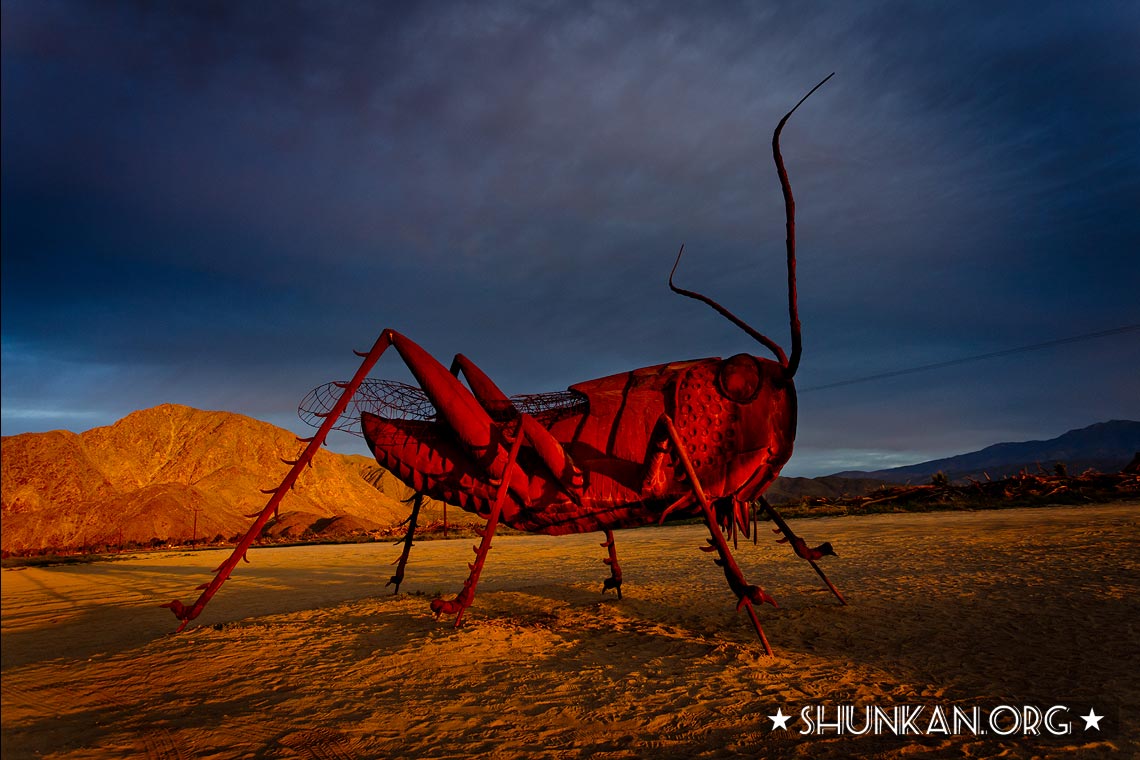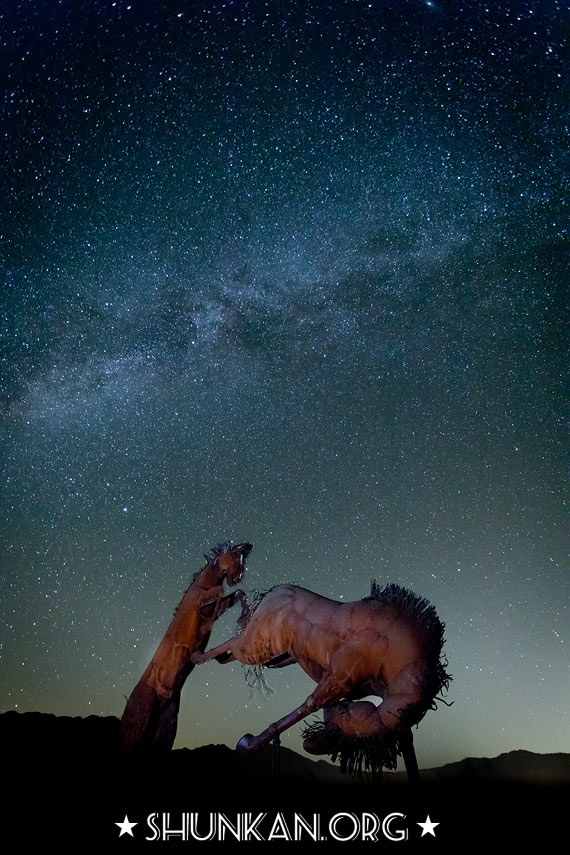Shunkan.org - Blog
Galleta Meadows Sculptures
When I went to Anza-Borrego in March to take pictures of the blooming desert flowers, I also packed my heavy tripod and took some pictures of the rusty metal sculptures at Galleta Meadows. That was the very first time I tried to take pictures of a starry night. I later learned that the best time to see the many stars of the milky way starts a little bit later than March, and I ended up going again in September. The picture above is from September.
I've also included some pictures I took during the day. This sculpture depicts the Wind God Bird maybe 20 or 30 minutes before sunset.
This one is taken @ ISO 6400, f/2.8 and 30 seconds exposure, on a tripod of course. Sometimes it pays off to bring a tripod that's on the heavier side, because it got very windy on that night in the desert.
I had to go approximately a quarter mile off road with my rental, a Toyota sedan, but it was really worth it!
I took the picture of the giant locust at sunrise in March, one of the rare occasions I would be up already that early in the morning.
I brought a Canon 580EX flash and set it to the lowest setting and triggered it off-camera manually to show the sculpture instead of just a silhouette.







































